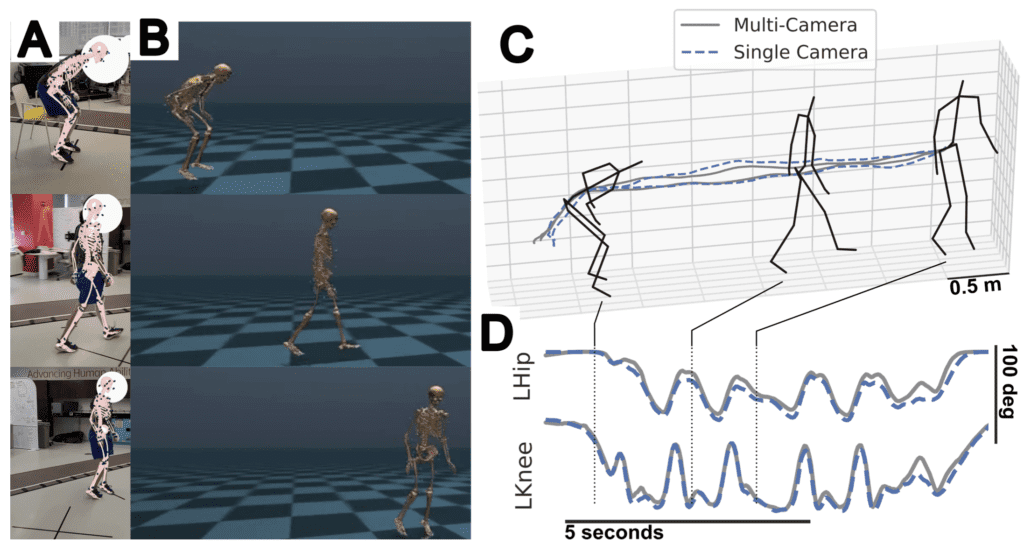Integrating Wearable Sensors and Video for Advanced Clinical Assessment
- Fusion of Technologies: Combining uncalibrated IMUs and handheld smartphone video enhances the accuracy of knee kinematics reconstruction.
- Clinical Applications: The method offers substantial utility for assessing and monitoring human movement, particularly for individuals with gait impairments.
- Ease of Use: The technique eliminates the need for time-consuming sensor-body calibration, making it practical for clinical and at-home settings.
In a groundbreaking study, researchers have developed a method to fuse uncalibrated inertial measurement units (IMUs) and handheld smartphone video to accurately reconstruct knee kinematics. This innovative approach leverages the complementary strengths of video and wearable sensor data, providing a robust and practical solution for biomechanical analysis. The fusion of these modalities offers significant potential for clinical assessment and monitoring, particularly for patients with gait impairments.
Integrating Video and Wearable Sensors
Traditionally, biomechanical analysis of human movement relied on marker-based methods in motion analysis laboratories. These methods, while accurate, required significant setup time and expertise, limiting their usability in clinical settings. Recent advancements in multiview markerless motion capture have improved the estimation of joint locations using computer vision. However, these methods still involve cumbersome calibration processes.
The new method presented by researchers bypasses these limitations by combining handheld smartphone video with uncalibrated wearable sensor data at full temporal resolution. This integration produces biomechanically accurate kinematics without the need for sensor-body calibration. The approach leverages modern 3D keypoint detectors and differentiable biomechanical models to achieve high accuracy.
Clinical and Practical Applications
The ability to accurately measure knee kinematics has far-reaching implications for health monitoring. Changes in upper limb kinematics, for example, are significant in the months following a stroke, while lower limb kinematics can differentiate between healthy and pathological gait. Traditionally, these measurements required extensive laboratory setups with calibrated sensors and cameras.
By using a fusion of smartphone video and IMU data, the new method simplifies the process, making it accessible for routine clinical use and at-home monitoring. The technique has been validated with a diverse group of participants, including those without gait impairments, lower limb prosthesis users, and individuals with a history of stroke. The results show that the fusion method not only reduces errors in kinematic measurements but also allows for tracking through periods of visual occlusion.

Eliminating Calibration Challenges
One of the most significant advantages of this method is the elimination of the time-consuming calibration process. Traditional methods required precise calibration of sensors to the body and synchronization of multiple cameras. This new approach uses an implicit function to reconstruct biomechanics from monocular video, making it much more user-friendly.
This development holds particular promise for clinical practitioners who need efficient and accurate tools for assessing patient movement. It also opens the door for patients to monitor their rehabilitation progress from home, providing continuous and reliable data to healthcare providers.
The fusion of uncalibrated IMUs and handheld smartphone video represents a major advancement in the field of biomechanical analysis. By combining the detailed, high-resolution data from wearable sensors with the comprehensive view provided by video, this method offers a practical and efficient solution for reconstructing knee kinematics. Its ease of use and accuracy make it a valuable tool for clinical assessment and monitoring, paving the way for improved patient care and rehabilitation outcomes. As technology continues to advance, such innovations will undoubtedly play a crucial role in the future of healthcare and biomechanics.

